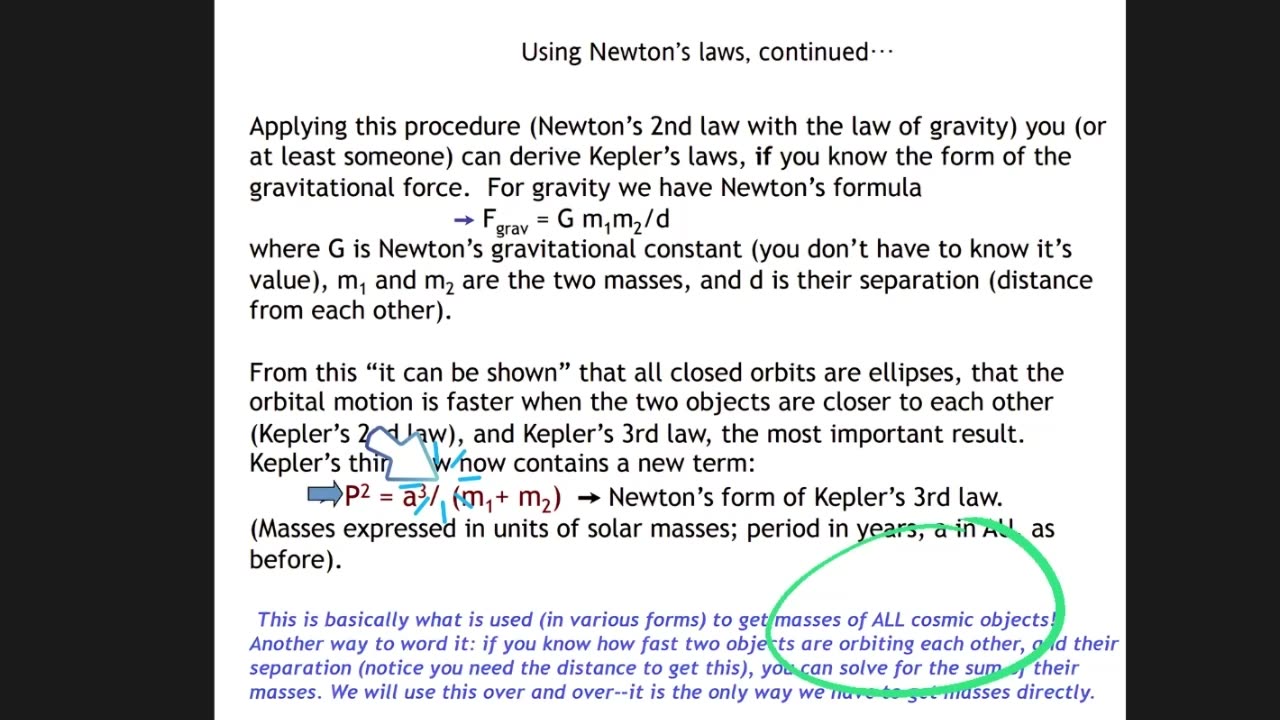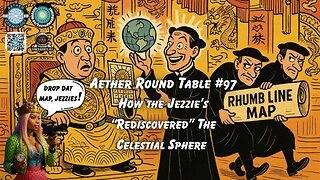Premium Only Content

About the 'Gravitational Constant'....
About the 'Gravitational Constant'....
The force you named gravity, is not in question, the causal mechanism IS!
We agree that things go down when dropped.
Little 'g' is LATITUDE DEPENDANT and can be derived by...
The kinematic equation:
ℎ=1/2at^2+vt
Where:
- ℎ is the height of the ball above the ground
- a is the constant acceleration downward
- t is the time for the ball to fall to the ground
- v is the initial velocity, which is 0 in this case (since the ball is dropped from rest)
Simplified kinematic equation when the initial velocity v=0:
ℎ=1/2at^2
solved for acceleration a:
a=2h/t^2
To put this into a real life situation, we only need to know the height at which an object is dropped and the time it took to hit the ground to calculate the rate at which it falls.
if an object is dropped from 10 meters,
and it takes 1.43 seconds to fall,
we can solve for a,
a= 2x10/(1.43)^2
a= 20/2.0449
a= 9.78
The gravitational constant G is a key part of Newton's law of universal gravitation, which states that the force FF between two masses m1 and m2 separated by a distance r is given by:
F=G*(m1m2/r^2)
This constant G is what makes the equation work, giving us the correct magnitude of the gravitational force.
Historical Context: Cavendish Experiment
The first precise measurement of G was conducted by Henry Cavendish in 1798 using a torsion balance apparatus. Cavendish's experiment didn't directly measure G but rather the density of the Earth. From this, G was later derived. The setup involved measuring the tiny gravitational attraction between lead spheres, which allowed Cavendish to calculate the force and thus infer the value of G indirectly
Deriving G Without Earth's Mass
To derive G without knowing the Earth's mass, we can turn to the principles of the Cavendish experiment, which relies on measuring the gravitational force between known masses in a controlled environment.
Setup the Experiment: Use a torsion balance with two small masses m1 and m2 suspended from a wire. Place two larger masses M1 and M2 nearby, such that they exert a gravitational force on the smaller masses.
Measure the Force: The gravitational attraction between the masses will cause the wire to twist. Measure the angle of twist θ, which is proportional to the force F.
Calculate the Torsion Constant:
The torsion constant κκ of the wire can be determined by measuring the period of oscillation of the system.
The torque τ due to the gravitational force is given by τ=κθ
Relate Force to Torque:
The force between the masses is related to the torque by
τ=F⋅d
where d is the distance between the masses.
Derive G:
Using the measured values, we can derive G from the relationship
G=m1m2τ/r2
Here, r is the distance between the centers of the masses m1 and m2, and τ is the torque measured.
Mathematical Formulation
Given the torsion balance setup, the gravitational force can be expressed as:
The torque τ is related to the force by:
τ=F⋅d Since τ=
-
 1:25:32
1:25:32
Anti-Disinfo League
3 months agoHow the Jezzies 'Rediscovered' the Celestial Sphere
328 -

Graham Allen
1 hour agoFAKE NEWS Is Everywhere!! Are We Living In The Upside Down?!
31.2K323 -
 LIVE
LIVE
Wendy Bell Radio
5 hours agoFeeding Their Greed
6,932 watching -
 LIVE
LIVE
Badlands Media
7 hours agoBadlands Daily: November 26, 2025
812 watching -
 1:13:11
1:13:11
Chad Prather
16 hours agoGratitude That Grows in Hard Ground: A Thanksgiving Message for the Soul
43.8K34 -
 LIVE
LIVE
LFA TV
12 hours agoLIVE & BREAKING NEWS! | WEDNESDAY 11/26/25
3,127 watching -

The Chris Salcedo Show
12 hours ago $7.55 earnedRemembering Rush On A Truly American Holiday
12.4K1 -
 36:24
36:24
Julie Green Ministries
3 hours agoLIVE WITH JULIE
56.3K161 -
 1:05:27
1:05:27
Crypto Power Hour
11 hours ago $7.60 earnedWhat You Need To Know About Gold Tokenization
42.4K7 -
 1:46:14
1:46:14
LIVE WITH CHRIS'WORLD
12 hours agoTHE WAKE UP CALL - 11/26/2025 - Episode 14
15.8K2